|
I don't have kids, so can only imagine what it's like to lose one at an unthinkably young age. When it happens in movies, the impact on the parents is always devastating, very much as it would be in real life. In straight dramas, the grieving experience and the slow process of healing often becomes the focus of the film, but in horror-themed works it's usually a different story, one that often divides the parents along gender lines. Bereaved fathers may sometimes wallow in grief, but tend to then try to come to terms with their loss, while their female partners will often instead embrace spiritualism in some form or other. You'll find no shortage of examples, from Nicolas Roeg's genre masterpiece Don't Look Now to Ari Aster's more recent Hereditary. In real world terms, this is a little insulting, a suggestion that while men deal with tragedy in level-headed terms, women are unable to face up to the loss and so instead are suckered in by mumbo-jumbo beliefs that allow them to pretend their child is still somehow with them after all. Interesting that the directors of these movies tend to be male. Of course, when it comes to horror movies, real world logic is often turned on its head, and instead it's the husband or boyfriend's rejection of the supernatural that comes across as hopelessly wrong-headed. In horror movies, ghosts are real, and mediums really can connect with the spirits of the dead and we don't question that. In some of the best examples, such as the aforementioned Don't Look Now, it's not so clear cut, and the door is often left open for individual audience interpretation. In such films, the unfortunate child tends to meet its end early on in the story, and from a storytelling perspective this makes perfect sense, as the focus of these films is how its parents cope with such an appalling loss. Some films will even have the death in question take place in their opening scene – again, I have to cite Don't Look Now as a pitch-perfect example.
Based on the novel Julia, an early work by respected genre writer Peter Straub, the rarely seen and discussed 1977 British chiller Full Circle (also known by its less subtle American release title, The Haunting of Julia) begins in similar fashion, albeit with a particularly grim twist. It begins on a domestic scene so unremarkable that it's easy to miss a small snippet of relevant information that is dropped in conversation while the American Lofting family start the day in their London home. As busy mother Julia (Mia Farrow) serves breakfast whilst conversing with her young daughter Katie (Sophie Ward) and her distracted husband Magnus (Keir Dullea), Katie helps herself to an apple from the fruit bowl on the kitchen table. Seconds later she starts to choke, and while her coughs are initially dismissed by Magnus as breakfast table rudeness, when she continues to struggle and falls to the floor unable to draw breath, Julia realises that her windpipe is blocked. Desperate attempts by both parents to clear the blockage fail, and Kate starts to suffocate. Magnus grabs the phone to call for an ambulance, but with Katie still unable to breathe and losing consciousness, a terrified Julia grabs a knife with the intention of performing a tracheotomy to clear the obstruction.* A short while later the ambulance arrives to find Julia standing in the hallway in a state of shock, shaking uncontrollably, and spattered with her daughter's blood. It's all we need to see to know that her valiant attempt to save Katie's life did not end well.
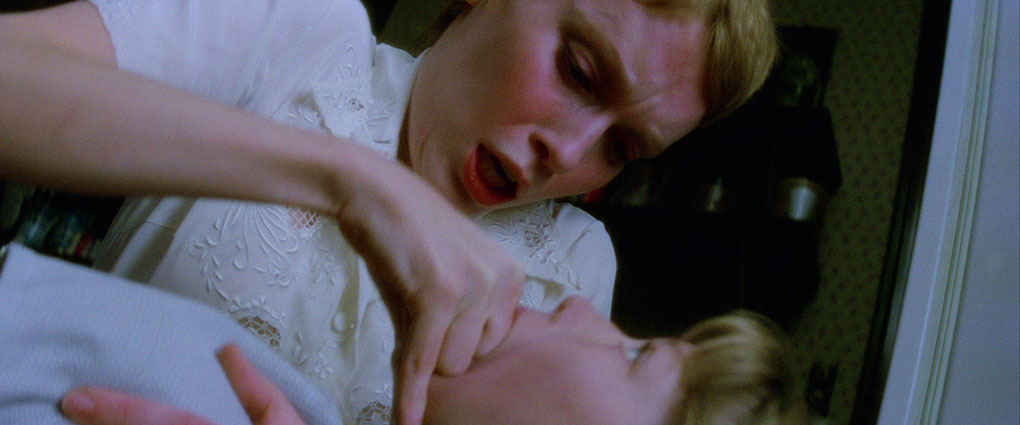
An unspecified period later, the mentally scarred Julia is still in hospital, but Magnus calls to convince her doctor that it's time that she came home. Later that day, when the dressed but still withdrawn Julia is heading towards the exit, she sees Magnus talking to her doctor and ducks down the stairs, runs out of the hospital and grabs a taxi. A short while later, a casually racist estate agent hands her the keys to a furnished property in London's upmarket Holland Park, a house whose many rooms include a former nursery that is now cluttered with furniture and old children's toys. Once inside, she opens her suitcase and removes a framed picture of Katie and a clockwork clown doll that bangs cymbals together when wound up, cymbals that are sharp enough for Julia to accidentally cut her finger on them. Ah, they don't make toys like that anymore. This is one of several seemingly throwaway details that later prove to be significant.
A few days later, when Julia meets with Magnus's sister Lily (Jill Bennett) for tea, Lily tells her that Magnus is desperately worried about her, to which Julia responds by asking Lily not to tell him where she now lives. "Things have been wrong for a long, long time," she reveals. "Maybe they were never right." Lily continues to make a case for reconciliation, but Julia is adamant. "Lily, it's over, it's finished! I bought a new house, I'm happy there!" she defiantly proclaims. It's on the walk home that she first catches sight of a young girl who looks uncannily like Katie, who then disappears with a suddenness that suggests she may never have been there in the first place. That evening she returns home from a trip out to get food to find herself locked out, and in the process of breaking in she cuts her leg and gets blood on her hands. Washing it off triggers painful memories and causes her to break down, but her tears are interrupted by the sort of floorboard creak that suggests there might be someone else in the house. She suspects it's Magnus and loudly threatens to call the police, but no one is forthcoming and the sounds then cease.
It's a captivating opening ten minutes in which key information is imparted with almost sleight-of-hand economy. That Americans Julia and Magnus have been living in London for many years, for example, can be deduced not from anything said, but from the fact that their daughter speaks with an English accent. We also know that the clown doll meant a lot to Katie, not because were saw her playing with it in the opening scene, but due to the way that Julia looks at it and holds it when she takes out of her suitcase on arriving at the house. And despite starting the film with such a dramatic bang, sensationalism is avoided at every step, from Julia's heartbreakingly desperate pleas to Katie not to die as she attempts to clear the blockage to the directorial decision to skip past the actual moment of Katie's death in order to focus exclusively on the impact it has on her traumatised mother.

Although Julia has effectively isolated herself through her chosen attempt to come to terms with her loss, moral support is on hand in the shape of cheerful antiques dealer Mark Berkeley (Tom Conti), an old family friend who is fiercely loyal to Julia and has little time for the domineering Magnus. It's in his company that Julia seems most relaxed and experiences her few rare moments of fleeting happiness, and it's to the film's credit – or at least this theatrical release cut of the film (more on this below) – that their relationship remains a platonic one, a sidestepping of expectations and romantic cliché that remains refreshing and helps sell their friendship as touchingly real.
When isolated from others, however, Julia is as haunted as the American title of the film suggests, though whether it is by the spirit of her lost child or her own traumatic memories is initially unclear. As it turns out, it could be a little of one, and a little of something else entirely, and the second time she sees the young girl that she believes is Katie, the ante is troublingly upped. For reasons that are not clarified, Julia sits down in a local park and starts taking Polaroid pictures of children at play, a moment that has dated intriguingly in two very different ways. For a start, the very idea of a stranger pointing a camera at a playground full of kids would set instant alarm bells ringing today – just try it and see how quickly you get your collar felt. And then we have the pictures themselves, which are simply placed on the bench beside her and ignored, and the fact that we never get to see them rather neatly misdirected me. You can blame this one on the passing of time and genre evolution, as when someone takes a Polaroid picture in a post-Ringu modern horror work, the image that slowly develops is almost guaranteed to contain something unexpected or disturbing. Instead, as Julia frames up another picture, she again spots the girl she believes is Katie, this time crouching on the ground with her back to her a few metres away. As Julia stands up and approaches her, however, she's momentarily distracted, and when she looks up, the girl has once again vanished. When she investigates the ground in which she seemed to be playing, Julia discovers the mutilated corpse of a tortoise and the knife used to slice up the animal. When she picks them both up in a state of bemusement, a young boy that we earlier saw playing with the animal cries for his mother, who reacts with disgusted and angry disbelief at what she assumes Julia has done. The distraught Julia flees, but those of us watching know full well that she didn't do it. Or do we? It's here that I first found myself questioning the objectivity of what I was watching, and wondering if maybe I was being shown things not as they actually happened, but as the still tormented Julia sees them. Did she really find the knife and the mutilated tortoise, or was she discovered holding both after committing an appalling act that she has no memory of, a subconscious reliving of the moment that her attempts at emergency surgery horribly backfired?
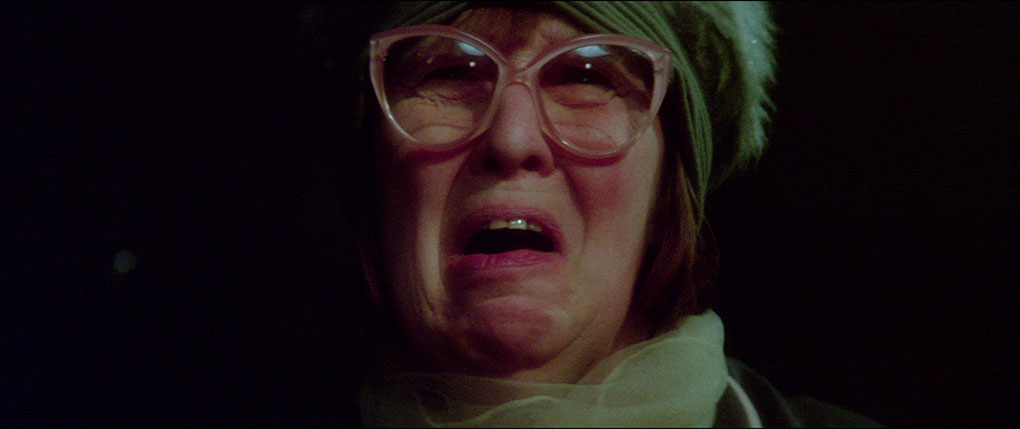
Julia's not been home long when Lily phones asking if she can help her out of a fix. A group she is part of is due to hold its monthly gathering tonight, but the usual venue has suddenly become unavailable. Could they use Julia's house instead? "You did say you'd enjoy some company," Lily adds, amidst offhand remarks about having a new medium named Mrs. Flood (Anna Wing) and how good she is. Only as the conversation ends do we discover that Lily is making the call in a seemingly satisfied Magnus's presence. What, exactly, are they up to? A still rattled Julia tentatively agrees, and part of me groaned, just a little. Maybe it's just me, but I struggled to believe that Julia would want something as potentially upsetting as a séance to be held in her house so shortly after the incident in the park, but this proves to be a small credibility hiccup well worth swallowing. For a start, having made this decision Julia then behaves in a consistently credible fashion. Unwilling to face the group alone, she invites Mark along for moral support, a move that clearly throws a spanner into whatever plan the clearly miffed Lily had in mind. Julia also backs out of the séance before it really gets going, quickly realising that she's just not up to participating in such an activity, and Mark sensibly also leaves the table to be with her. It comes as no surprise that despite being gently mocked by Mark, the previously jovial Mrs. Flood does appear to make contact with someone, but whatever it is she sees, she quickly becomes too traumatised to describe it and the séance is brought abruptly to an end. One of the other participants, Miss Pinner (Damaris Hayman) is also so upset by it all that she hurriedly leaves the table and ends up falling downstairs in a faint. When pressed by an urgently curious Julia, Mrs. Flood can only tell her in a frightened whisper, "You must leave. Go away. Leave the house." When Julia asks why, a clearly petrified Mrs. Flood mutters simply, "Terrible thing."
It's a superbly handled sequence that genuinely rattled me without even a hint of visually realised paranormal activity, with Anna Wing so convincing in her portrayal of Mrs. Flood's terror that those words, "terrible thing," sent a very real shiver down my spine. It's here that the true mystery of the film begins, one that Julia takes it on herself to investigate and uncover the potentially sinister truth of. It's a compelling journey, not least because the séance sends the plot in a different direction to the one seemingly being established by what has come before. We're still in potentially supernatural territory, and the more Julia uncovers, the more compelled she is by the subject of her investigation, for reasons that are later fully realised in an impeccably handled final scene where the true meaning of that carefully chosen UK title becomes clear.
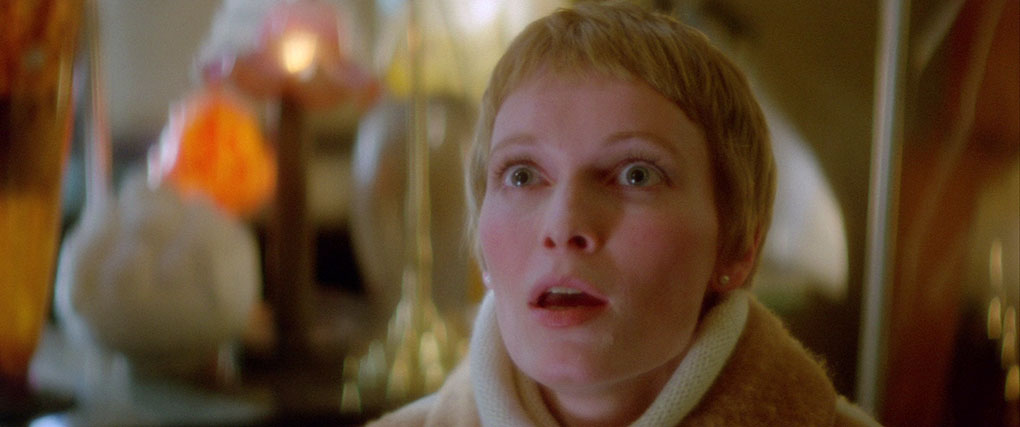
Mia Farrow apparently came close to backing out of this film even before shooting began, not wanting to do another horror film after rewatching Rosemary's Baby, and was coaxed back on board in part by director Loncraine's view – one she shared – that this was primarily a story about woman suffering a breakdown after losing her child. I suspect it would have played even more convincingly to that narrative in the original cut that was shown at Cannes. Following the screening, six minutes of suggested cuts were made and new material shot, which bowed, just a little, to producer pressure to make a more incident-driven supernatural horror in the mould of The Omen, whose box-office success they were keen to emulate. This fails to make a serious dent on the film that Loncraine and Farrow clearly wanted to make, one whose primary focus is Julia and her state of mind, and whose supernatural elements are employed as storytelling tools rather then used for set-piece scares. It's an approach perfectly captured in a late film moment in which a favourite horror jump-scare is purposefully neutered and not played for shocks or scares at all (to say more would act as a serious spoiler). And how glad I am that Farrow came back on board, because she really is on top form here, drawing on that sense of emotional frailty that worked so well for her in Rosemary's Baby, but here driven by grief, guilt and loss rather than mounting paranoia. So believable is she in this regard that the moment when her fragile surface calm collapses and she breaks down in tears proved genuinely painful in a way that cemented my engagement with her for the remainder of the film.
Keir Dullea is not given much screen time to communicate what sort of husband Magnus really is, and while some have criticised his performance for lacking in range, he left me in no doubt that Julia's desire for a separation was not exclusively triggered by the death of their daughter. Probably my favourite performance comes from the ever-reliable Tom Conti, whose easy-going, naturalistic delivery makes Mark instantly likable, and it's easy to believe that he and Julia have been close friends for years. Particularly telling is his only in-film encounter with Marcus, a sequence in which Conti's expressions, way with words and body language told me more about Marcus and Julia's marriage than anything the characters say. The supporting cast is also top notch here, from Anna Wing's down-to-earth and ultimately traumatised medium, Mrs. Flood, to Jill Bennett's restrained performance as Magnus's more pragmatic sister Lily – just watch how believably she delivers a simple line like "I don't know. She's very determined, Magnus," which she sells as much through how she uses her eyes as the quiet conviction of her voice. There are also a smattering of familiar faces in the smaller roles, all of whom are on fine form, including a young Nigel Havers as the racist estate agent, Peter Sallis as a neighbour who challenges Magnus when he tries to gain forcible entry to Julia's house, and Edward Hardwicke, Mary Morris and Robin Gammell as characters I can say no more about without getting into spoiler territory.

There is some discussion in the special features about whether Full Circle is actually a supernaturally themed horror film or a study of a woman in the throes of a nervous breakdown, with director Loncraine happy with either reading but clearly favouring the latter. For me, it plays as a carefully crafted melding of the two. The supernatural elements do initially play as symptoms of Julia's slow psychological implosion, but there are developments later that cannot be easily covered by that interpretation, and frankly any attempt to do so risks tipping the film towards deadly "It was all a dream" territory. For me, those two interpretations gel perfectly and logically. Mrs. Flood's terrible vision, whatever it may be, ultimately sends Julia on a search to uncover a dark secret, one that although triggered by her belief that she is seeing visions of her daughter, actually proves unrelated but ultimately takes her to a place where she may find what she has been unconsciously seeking. It's a fascinating journey, all the more so for electing to whisper rather than shout, with Loncraine ably assisted by Peter Hannan's atmospheric scope cinematography and an excellent score by Colin Towns, whose pre-filming composition of the main theme helped to get the whole project off the ground, and whose use of single, low-level synthesiser notes can infuse even the quietest of scenes with an unsettling air of the uncanny or potential threat. The result is a small, unsensational, and often overlooked gem of 70s British genre cinema, a chillingly effective exercise in suggestion whose carefully crafted narrative and subtextual complexity is given the treatment it deserves by a cast and crew that was clearly in tune with the material and central themes. Chalk another one up for the BFI's excellent Flipside strand.
Although the BFI has already dipped its toes into UHD waters with the likes of The Seventh Seal and The Proposition, Full Circle is the first Flipside title to be released on the 4K format. As the special features make clear, restoring what was almost a lost film to its former glory was a six-year long passion project for film historian Simon Fitzjohn, who worked with director Richard Loncraine and the BFI see the film revived to its present condition. Given how much time and work this must have taken, it's not hard to see why all concerned must have wanted to see it presented in the highest possible resolution on the best disc format currently available.
I should note here that I was sent a UHD review disc, but discovered that I am currently unable to do screen grabs from that format due to a new copyright protection system, and as I was already running late on this review, I decided to purchase the commercial release, which includes the Blu-ray disc from which the accompanying screen grabs have been taken. This did allow me the opportunity to compare the Blu-ray with the UHD, and terrific though the Blu-ray image is, the UHD transfer is visibly superior. It's also worth mentioning here that the image looks a lot more vibrant on a well-calibrated screen than the screen grabs here might suggest.
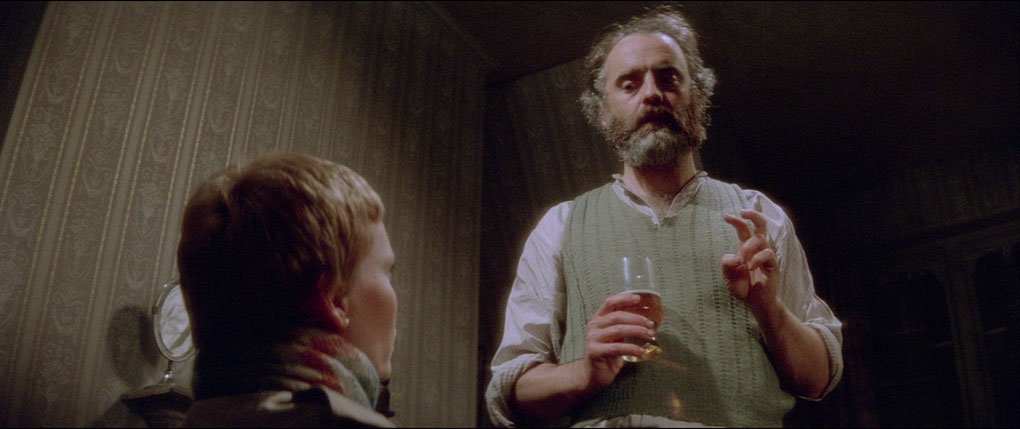
For the most part, the 2.35:1 image is crisp and the fine detail clearly defined, not in that razor-sharp, shot-on-digital manner, but that lovely, almost organic way that I still associate exclusively with film. This is one of the areas where the UHD wins out, as while that 35mm richness is captured by the Blu-ray, it really sings on the UHD, and while the warm, sometimes earthy, pastel-leaning colour palette looks great and the contrast is very nicely balanced on both discs, both are given an extra boost by the 4K resolution and the careful implementation of HDR. The black levels are rock solid on both formats, there's no noticeable damage, and I only spotted a couple of minor dust spots. A fine level of film grain is visible throughout. I will note that a couple of sequences do have a slightly softer feel, but I'm fairly sure that this was an intentional look on cinematographer Peter Hannan's part – Julia is often backlit by windows or doorways in these scenes, and highlights occasionally bloom in a manner that suggests the use of diffusing filter, and to my eye they still look right, if that makes sense. The film itself has a lovely look, and the 4K HDR transfer on the UHD disc does it proud.
I'm presuming that the Linear PCM 2.0 mono soundtrack has also been restored, as that's also in excellent shape, with clear reproduction of the dialogue, no matter how quietly it is whispered. Most pleasing is how good Colin Towns' score sounds, ensuring that those sinister synthesiser notes really get under your skin. There's no sign of damage or serious wear here.
Optional English subtitles for the deaf and hearing impaired have been included.
The main menu also offers the option to play the film with a brief introduction by director Richard Loncraine, who repeats a claim he makes in his commentary that this is "almost a good movie," but hopes you enjoy it anyway.
Audio Commentary with director Richard Loncraine and film historian Simon Fitzjohn
Do you like filmmaker commentaries? If so, you're going to love this one. Here director Richard Loncraine is teamed with author and film historian Simon Fitzjohn, who was the driving force behind the rediscovery and restoration of Full Circle and appears to know even more about the film than the man who made it. And it's an absolute treat, crammed to the gills with details on the film and its making, as well as thoughtful analysis by Fitzjohn of specific scenes and moments. Loncraine talks about working with Mia Farrow, and tells an alarming story of an on-set incident with fake blood that convinced Farrow she had accidentally cut young actress Sophie Ward's throat, which prompted her to run from the set and effectively go missing for a couple of days. Details are provided on the London locations, and Loncraine is sometimes almost dismissive of his work here, often crediting his collaborators for the things that he believes do work, particularly composer Colin Towns and his regular cinematographer Peter Hannan. Indeed, at one point he says to Fitzjohn, "I told you it was a flawed movie and you wouldn't listen to me!" The changes made to Peter Straub's source novel are discussed, and when asked by Fitzjohn if he was a fan of the book, Loncraine replies, "Not really, was anyone?" Ouch. I'm just scratching the surface of what is one of the most enjoyable and satisfying filmmaker commentary tracks I've listened to in a long while. Terrific.
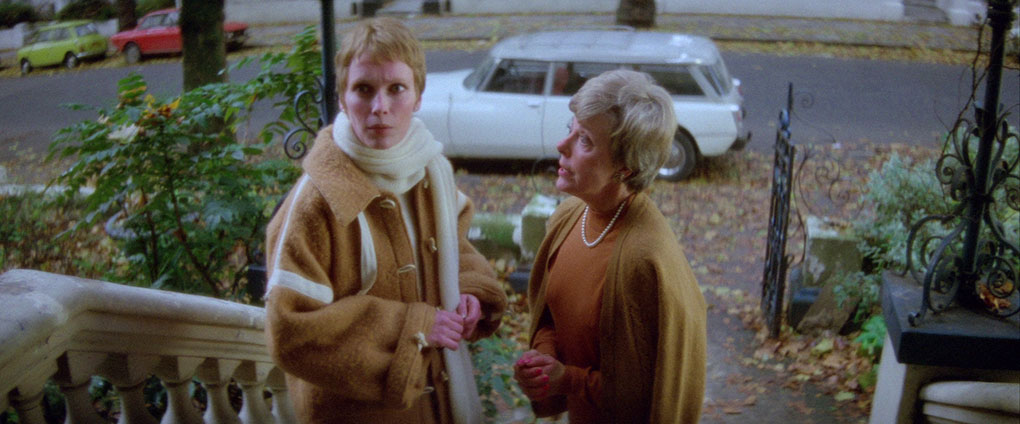
A Holland Park Haunting (24:27)
An interview with the immensely likeable and verbally energetic director of Full Circle, Richard Loncraine, in which he talks about his family's theatrical background and his journey from creating kinetic art to becoming a filmmaker, first for television and eventually for cinema with Slade in Flame. There are some really interesting stories on the way, including the fact that he made over 70 10-minute films for BBC science programme Tomorrow's World (a personal favourite in my youth), and the revelation that he was the one who introduced the Newton's Cradle executive toy to Britain after seeing it in the US, an item that he casually remarks, "sold a few million." He eventually moves on to Full Circle, and while some of the stories are repeated from the commentary – Mia Farrow's disappearance after the above-detailed incident with the blood, for example – there's plenty that is new to this extra.
Park Life (15:32)
Commentary co-host and self-confessed Full Circle anorak Simon Fitzjohn takes us on a tour of the London locations that appear in the film, marrying clips with newly shot footage – often from similar angles where possible – to compare how they were back in 1977 with how they are now. Fitzjohn completes his tour guide role by telling us a little about each location, particularly those whose original usage has since changed.
What's That Noise? (24:59)
Score composer Colin Towns recalls discovering music at a very early age, then outlines the journey he undertook as a musician, including his work with country musician George Hamilton IV and Deep Purple vocalist Ian Gillan. He admits that his ultimate ambition was always to do film music, and outlines how he came to write the score for Full Circle before the film itself was made. He praises its director, Richard Loncraine, describing him as an inspirational guy around whom the world never stands still, and also talks about the creation of the successful soundtrack album.
Coming Full Circle (10:58)
An engaging interview with actor Tom Conti, who looks back at the making of Full Circle, recalling the spooky atmosphere of the house in which they shot much of the film and reflecting positively on working with Mia Farrow and director Richard Loncraine. He provides further detail on a story told in the commentary about crashing the Land Rover his character drives because his view of the road was blocked by a bonnet-mounted camera and light, and confirms that Loncraine was the one who introduced the Newton's Cradle executive toy to the UK. He outlines a film project in which he was due to play a shape-shifting alien that was shelved after the release of E.T., and cites the "absolutely fantastic" Midnight Run as another film that only found an audience and widespread acclaim when it was released on home video.

The Fear of Growing Up (10:20)
Samantha Gates, who plays the child that Julia repeatedly sees in Full Circle, notes that she was modelling and acting from a very early age, and while she doesn't recall auditioning for the film, she has strong memories of the shoot itself, despite only being required for a couple of days. She praises Mia Farrow and director Richard Loncraine, confirms that she was asked to play the character naturally and with no overtly sinister overtones, and reveals that her own kids have now seen the film and were startled by just how chilling it is.
Joining the Circle (7:00)
A brief interview with associate producer Hugh Harlow, who recalls being brought to London from his home in Canada to take over the production when it was in a state of turmoil, where he extended the shooting schedule, fired two location managers and the first assistant director, but otherwise remembers the filming being largely plain sailing. He praises director Richard Loncraine and lead player Mia Farrow, and at various points describes the finished result variously as "a very good film," "a great movie" and "not a bad film."
A Haunting Retrospective (24:42)
Novelist and critic Kim Newman delivers a typically fascinating examination of Full Circle, discussing what he believes are its strengths and weaknesses, as well as the changes made to Peter Straub's source novel. In a particularly fascinating aside, he notes that Straub once lived in the next road along to him, a road in which celebrated horror novelist and filmmaker Clive Barker also resided. He praises Mia Farrow's performance, links aspects of the film to other supernaturally themed movies of the day, and believes that it's in the film's memorable final shot that director Richard Loncraine visually captures the style of Straub's writing.
Images of a Haunting (13:07)
Film historian and self-described Full Circle obsessive Simon Fitzjohn reveals that it's taken six or seven years to get this restoration complete, and that during that time he scoured the globe hunting for marketing materials and memorabilia of any kind. As he talks, a rolling gallery of images that this search unearthed plays out, which includes monochrome stills, a range of international lobby cards, pages from the Cannes and French and Spanish press booklets, the cover of an issue of Films Illustrated that had a feature on the film (I may well still have that myself), and international posters. This is intermittently paused so that Fitzjohn can discuss individual images or what they represent, allowing him to outline the content of a deleted scene that survives only as a single photograph, as well as how the fate of one character changed a new scene was shot after the screening at Cannes.
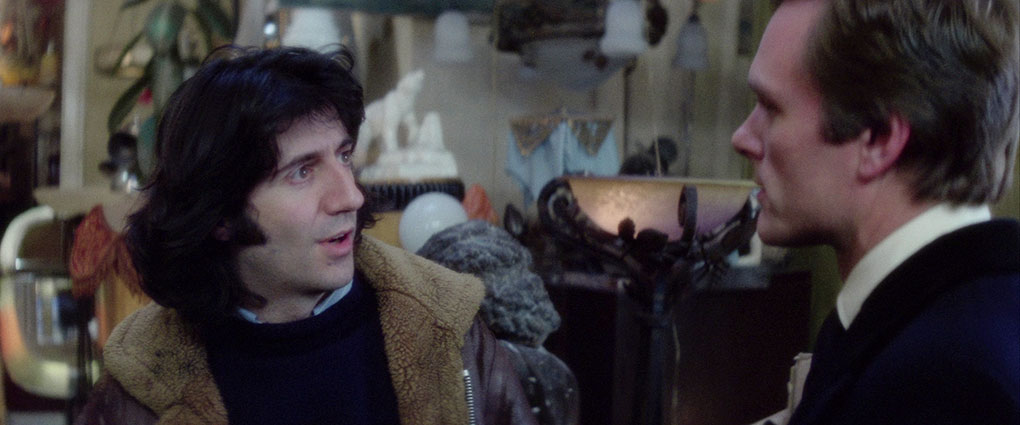
Stills and Transparencies (12:45)
A rolling gallery featuring production stills, a nicely worn paperback cover of Peter Straub's novel under the new title Full Circle ("Soon to be a major movie starring Mia Farrow"), the cover of the soundtrack album, and a collection of Italian posters on which the film is titled Demonio dalla facia d'Angelo, which I think translates as "Angel-faced devil".
Booklet
This 26-page booklet opens with a short but concise Director's Statement by Richard Loncraine, who suggests that if you like the film then it's his talented collaborators you have to thank. Simon Fitzjohn, whom Loncraine refers to as "Mad Simon" in his interview and describes as the person who knows more about the film than anyone, delivers a revealing look at its wildly uneven critical reception, as well as its failure to catch fire at the box office and the likely reasons why. He also discusses his own involvement in the film's rediscovery and restoration. BFI National Archive curator Dr. Josephine Botting provides a useful overview of director Richard Loncraine's career, and full credits are provided not just for the main feature, but all of the special features too.
When the BFI first launched its Flipside strand, I used to cover them all, and in the process was introduced to some remarkable films that I'd not only never seen but never heard of either. I can't recall why I stopped reviewing them (probably something to do with my chaotic private life), and my fellow reviewer Gary Couzens now covers just about everything that the BFI releases on disc, and only asks me to step in when that release schedule includes a UHD, a format he is currently unable to play. It's thus by happy chance that I ended up reviewing Full Circle, as this is so my sort of movie, and the lovely filmic look that it has in HDR 4K really justifies the decision to release it on UHD. If that wasn't enough, the disc is loaded with excellent special features, and the whole lot is also included on a Blu-ray in the same package for those who've yet to make the leap to 4K but plan to at a later date. I really liked this movie and this disc and thus have no problem highly recommending it.
|